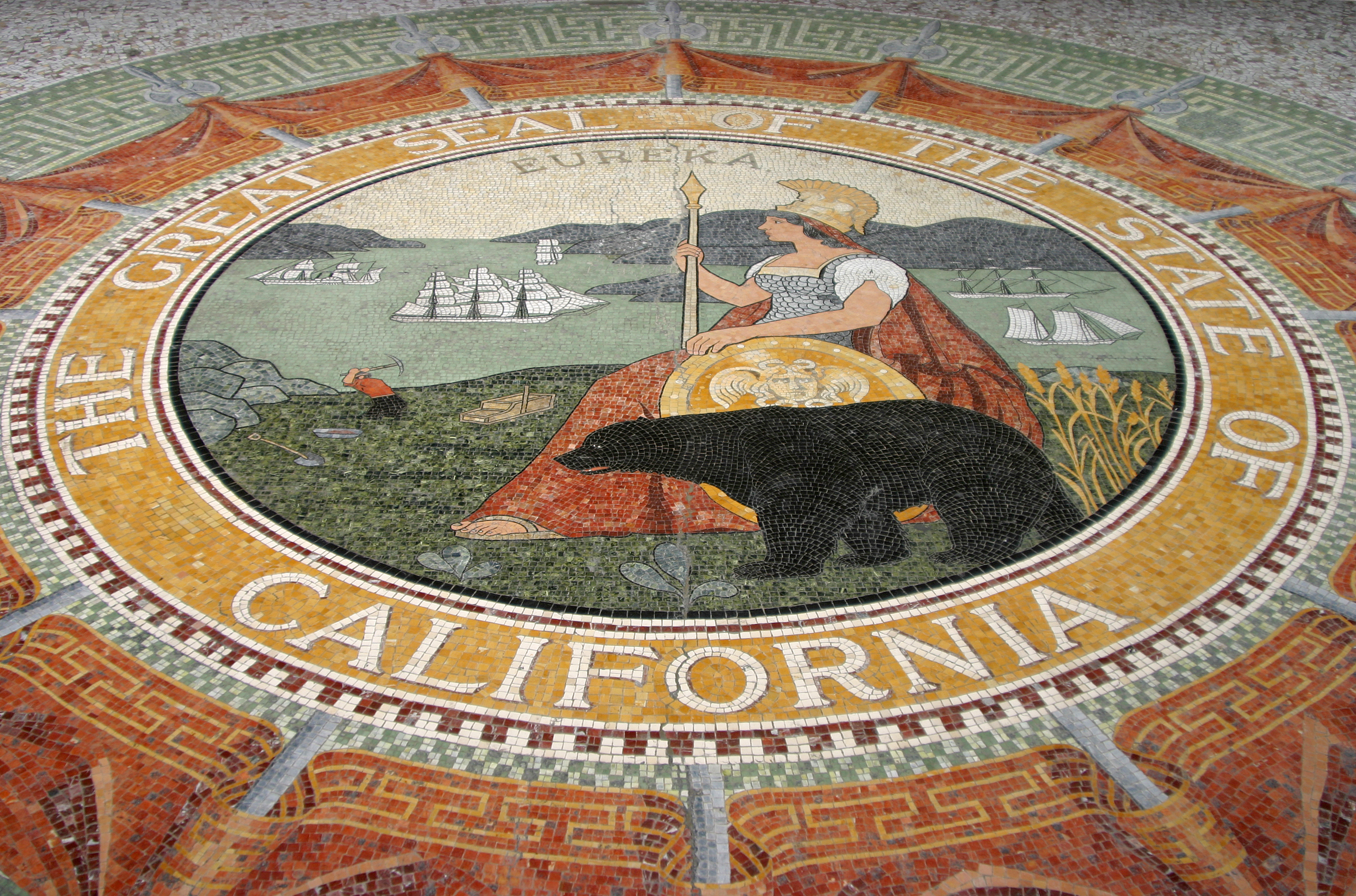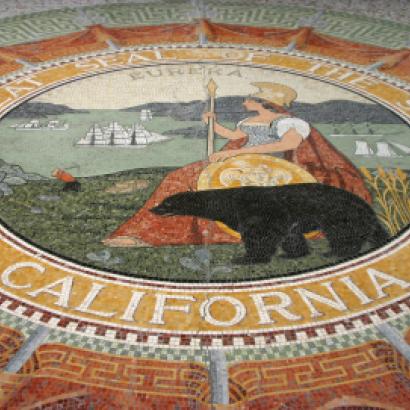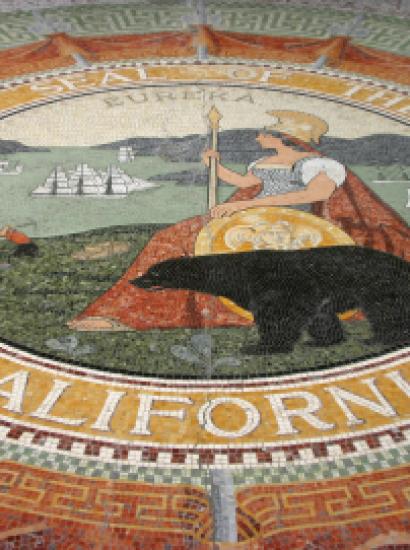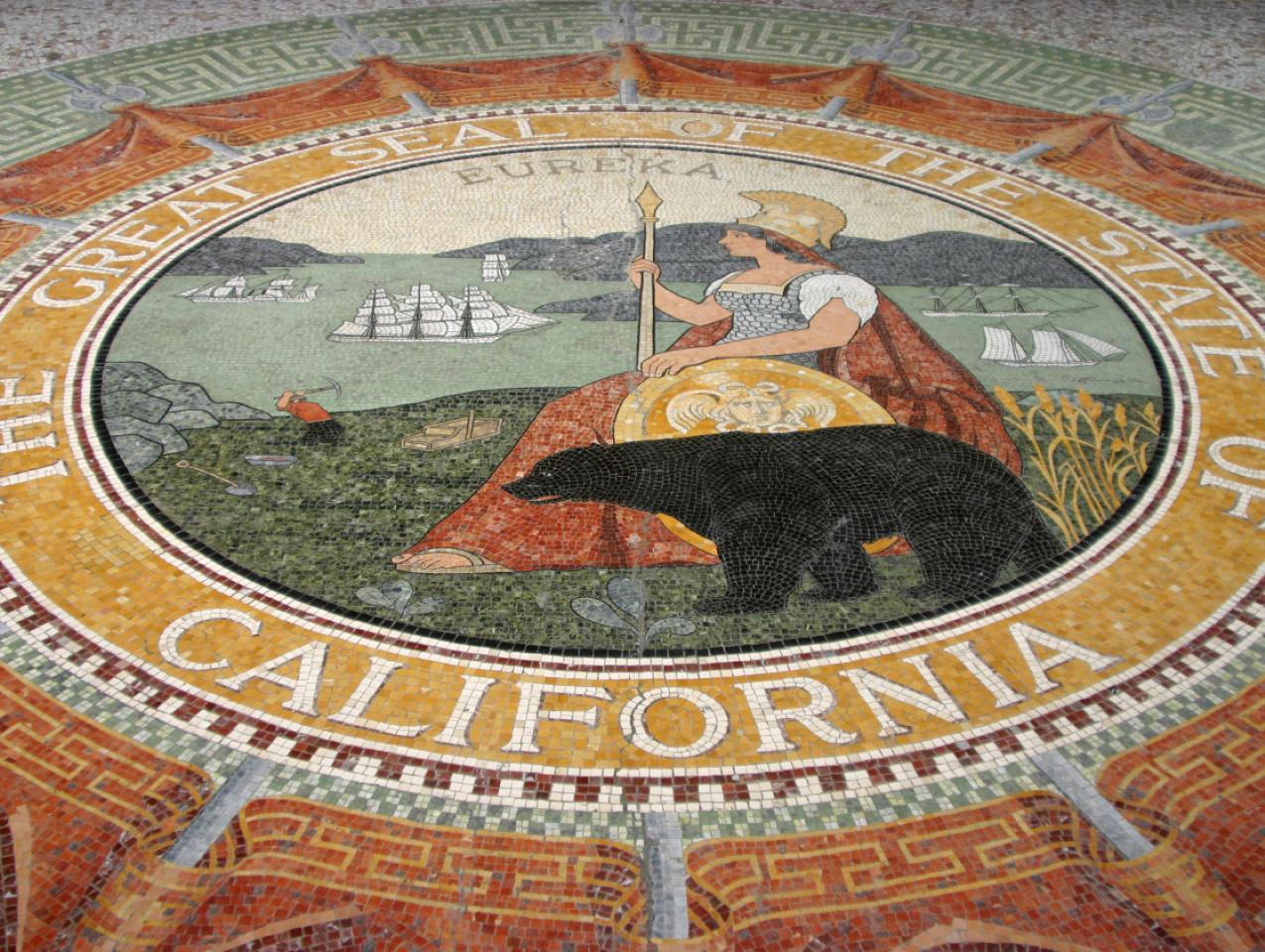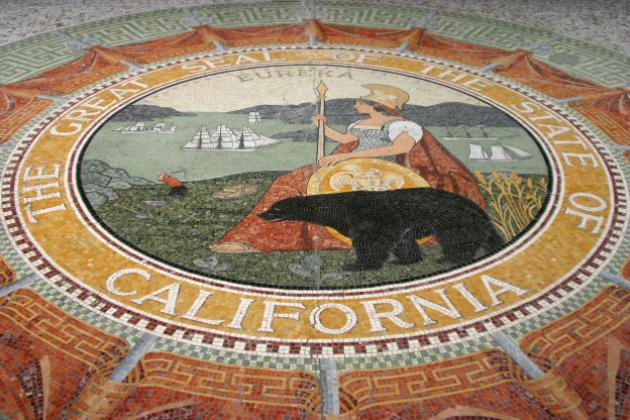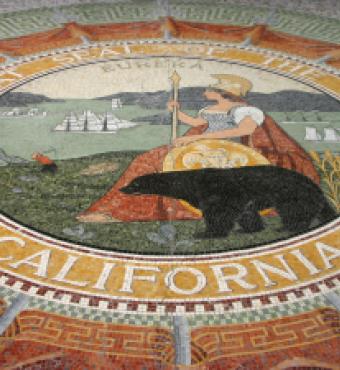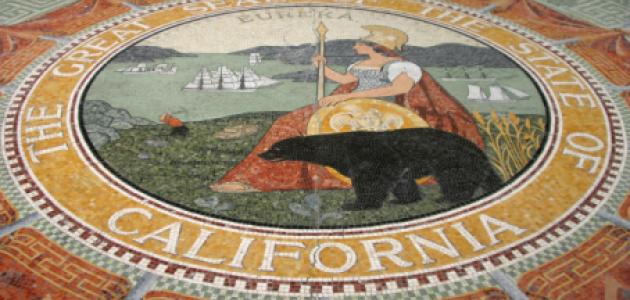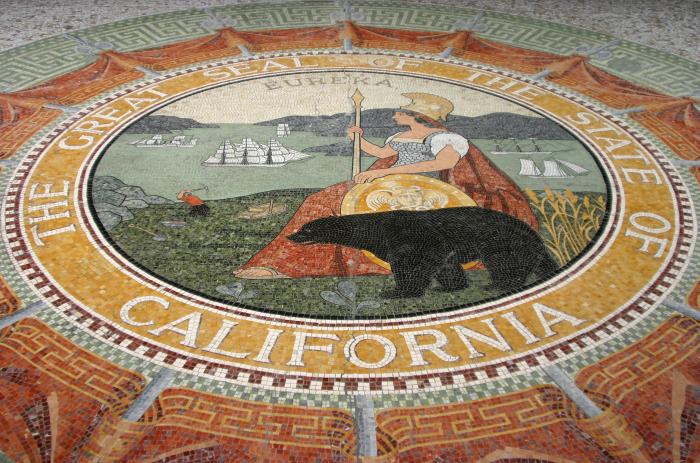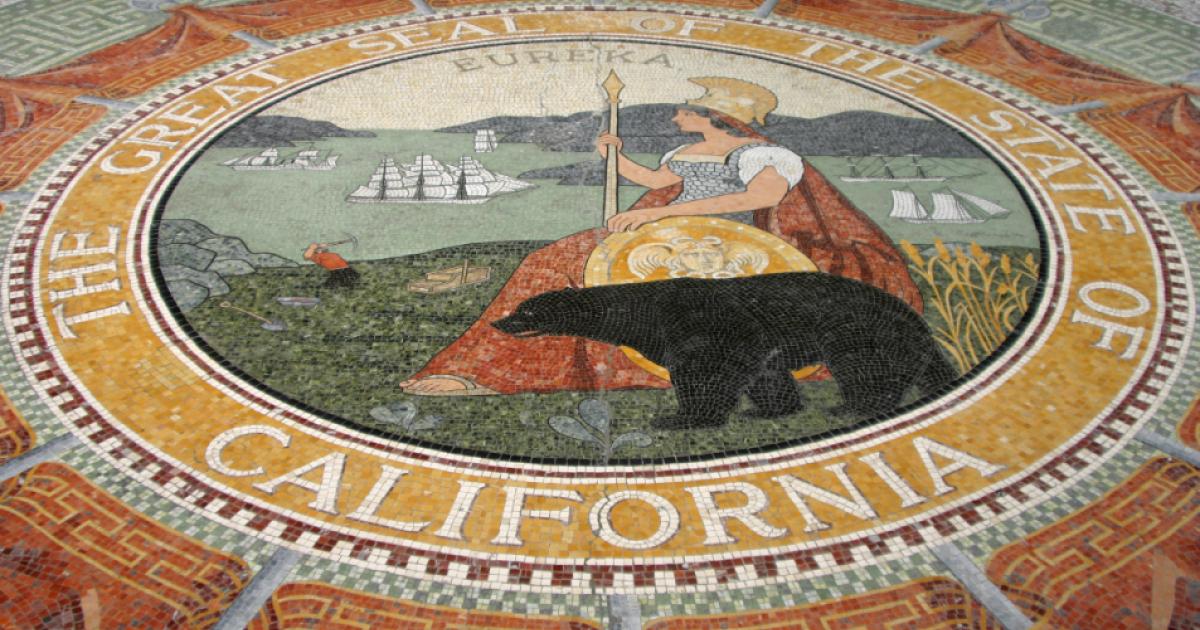- Politics, Institutions, and Public Opinion
- State & Local
- California
As he settles in to his new surroundings as California’s fortieth governor, Gavin Newsom will find it hard to escape Ronald Reagan, the last man to serve as both governor of California and president of the United States.
The private space in which Newsom will tend to state business is officially known as the Ronald Reagan Cabinet Room, in honor of the man who served as California’s thirty-third governor from 1967 to 1975.
Should Newsom and wife, Jennifer (both Marin County natives), and their four young children decide to permanently reside in the governor’s mansion, they’ll be the first family to do so since the Reagans and their two kids.
Another possible parallel to “The Gipper” hinges on whether Newsom will give in to the same temptation as Reagan (and Reagan’s successor and Newsom’s predecessor, Jerry Brown) and spend the better part of the first two years of his governorship seeking his party’s presidential nomination.
Newsom should heed these Reaganesque words of caution—that’s Nancy Reagan, not her husband: “Just say no.”
Time and again Newsom has denied interest in a 2020 run. Sometimes, he’s done it colorfully: “Oh, God, no—all that other stuff is absolutely, unequivocally—it’s just, not even of any passing interest to me,” Newsom told a reporter in June. “It really isn’t. None. Looking you in the eye when I say this. None.”
But what happens when Newsom’s political brain trust looks the emerging Democratic field in the eye?
They’ll notice that the slate of contenders is wobbly at the top. (Former vice president Joe Biden, Vermont senator Bernie Sanders, and Massachusetts senator Elizabeth Warren all have apparent flaws.) Unlike 2016, no one Democrat is likely to enter the primaries having cornered the market on money and organization.
Team Gavin will notice that, in a party fueled by animus toward President Trump, few are more outspoken than the Twitter-bombing Newsom.
They’ll also note that the road to the Democratic nomination runs through California, on the first Tuesday in March (the same day as eight other states, including Massachusetts, North Carolina, and Texas).
And they’ll notice a pattern: the last four non-incumbent Democrats to win the presidency—John F. Kennedy, Jimmy Carter, Bill Clinton, and Barack Obama—ranged in age from forty-three (JFK) to fifty-two (Carter); all were fathers to preteen or younger children. The youthful Newsom will turn fifty-three a month before Election Day 2020. He’s the father to four kids all under the age of ten.
So now that I’ve laid out the arguments in favor of a Newsom run, here’s the reason why he should say no: it’s not the same cat-and-mouse game that Ronald Reagan played fifty-plus years ago.
In 1967, a newly elected Reagan spent his weekdays in California and his weekends traveling beyond the Golden State to parts of the country targeted by his political tram—i.e., testing the presidential waters.
On October 25 of that year, two weeks after Gavin Newsom entered the world in San Francisco (the future governor was born 281 days after Reagan took office), Reagan was in Iowa giving a fund-raising speech on out-of-control federal spending—in the process, sounding very much like a presidential candidate.
Three weeks after Reagan’s speech, Michigan governor George Romney (Mitt’s father) became the first prominent Republican to announce his formal candidacy. Richard Nixon followed suit on February 1, six weeks before the New Hampshire primary. One month after Nixon threw his hat in the ring, New York governor Nelson Rockefeller said he was “ready and willing” to run “if called” by his party.
And Reagan? On March 25, his press secretary confirmed that California’s governor would have a political operation at the Republican National Convention. Five weeks later, Reagan’s team began issuing position papers. In mid-July, he barnstormed across the South, meeting with convention delegates in Arkansas, Maryland, Texas, and Virginia. On August 5, just three days before Nixon won the GOP nomination, Reagan made formal his candidacy.
Why such moves that were too cute by half? Because the Reagan strategy wasn’t to win states and enter the convention with the most delegates, but instead to stop Nixon from winning on the first ballot.
Which Reagan failed to do.
Nixon received 692 delegates—twenty-five more than needed—with Rockefeller finishing second (277) and Reagan tied for third (182 delegates) with the remainder of the field.
I offer this somewhat tedious history lesson to underscore a point: if Newsom were to seek the Democratic presidential nomination in 2020, it won’t be as easy as it was for Reagan.
For starters, Newsom couldn’t afford to limit his out-of-town travel to weekends only. He’d have to be on the ground in the early primary states and raising money in the likes of Florida, New York, Texas, and Washington, DC, which are awash in political money.
Then there’s the matter of the calendar.
In 1968, Reagan’s strategy hinged on a handful of primaries in April and May. In 2020, at least twenty-two states will hold primaries or caucuses before April. That includes California. In 1968, Reagan ran unopposed on California’s June primary ballot.
There’s one other reason why Newsom should consider putting a presidential run on pause: California’s State Legislature.
This might seem odd given the present Democratic legislative supermajorities, which are unprecedented in modern times. Democrats control sixty of eighty State Assembly seats (their most since 1883) and twenty-nine of the State Senate’s forty seats (their most since 1962). Almost any party-line, majority vote is a foregone conclusion. Even raising taxes, which requires a two-thirds majority, should be easier than in past sessions.
But the new Legislature has two defining traits. Thanks to 2012’s Proposition 28 and the change in California term limits (lawmakers who arrived in 2012 or later can serve up to twelve consecutive years in either the Assembly or the Senate), it’s the most experienced Legislature in years. That means plenty of unfinished business to settle in 2019 and beyond. Thus the spectacle of reintroduced legislation from the previous session when the Legislature met early last month.
The other trait? Lawmakers expect Newsom to spend more freely than his predecessor.
Whereas Jerry Brown was reluctant to expand educational and health care entitlements (universal prekindergarten; single-payer health care), Newsom has a pedal-to-the-metal agenda (per his campaign literature: “Guaranteed health care for all. A ‘Marshall Plan’ for affordable housing. A master plan for aging with dignity. A middle-class workforce strategy. A cradle-to-college promise for the next generation. An all-hands approach to ending child poverty”).
But what if Newsom decides that his fellow Democrats don’t deserve all that’s on their spending wish lists? Or if he pursues ideas that are not so popular with the Democratic majorities (for example, taking up pension reform). Lawmakers could begin to resent a governor gadding about the backroads of Iowa and New Hampshire while their agenda goes unfulfilled in Sacramento.
The last Democratic governor to experience this pushback was Jerry Brown—not coincidentally, the last governor to have a veto overridden. Then again, Jerry Brown took two bites out of the presidential apple (he ran in 1976 and 1980).
Could Newsom wait until a second term to seek the presidency? It might be difficult to resist the urge, given that 2020 will produce the biggest land rush of Democratic hopefuls since 1988 (eight prominent Democrats in that year’s Super Tuesday vote).
Other Californians seem poised to run (Senator Kamala Harris, Los Angeles mayor Eric Garcetti). Besides, what could be more politically Kafkaesque for Newsom than this: criticizing Trump by day; praying at night for Trump’s reelection so there isn’t a Democratic president in his way in 2024.
It doesn’t mean that Governor Newsom should stay out of national politics. Indeed, as the campaign makes it way to California, the value of Newsom’s endorsement will allow him to impose litmus tests on the field.
It’s not the same as running the nation. But Governor Newsom will soon discover that the nation-state doesn’t lack for daily drama. Natural disasters occur with alarming frequency; legislators can be nagging to the point of annoying; tone-deaf bureaucrats can cause headaches on an hourly basis.
Just weeks after Newsom received the most voters ever for a gubernatorial candidate, it’s in the best interest of his constituents for the new governor to stick to his day job.
Just say no to running for president, Governor.
For now, at least.







